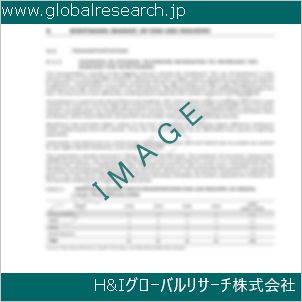1 Grid-tied Micro Inverter Market Overview
1.1 Product Definition
1.2 Grid-tied Micro Inverter Segment by Type
1.2.1 Global Grid-tied Micro Inverter Market Value Growth Rate Analysis by Type 2022 VS 2029
1.2.2 300-500W
1.2.3 500-1000W
1.2.4 1000-2000W
1.3 Grid-tied Micro Inverter Segment by Application
1.3.1 Global Grid-tied Micro Inverter Market Value Growth Rate Analysis by Application: 2022 VS 2029
1.3.2 SMEs
1.3.3 Residential
1.4 Global Market Growth Prospects
1.4.1 Global Grid-tied Micro Inverter Production Value Estimates and Forecasts (2018-2029)
1.4.2 Global Grid-tied Micro Inverter Production Capacity Estimates and Forecasts (2018-2029)
1.4.3 Global Grid-tied Micro Inverter Production Estimates and Forecasts (2018-2029)
1.4.4 Global Grid-tied Micro Inverter Market Average Price Estimates and Forecasts (2018-2029)
1.5 Assumptions and Limitations
2 Market Competition by Manufacturers
2.1 Global Grid-tied Micro Inverter Production Market Share by Manufacturers (2018-2023)
2.2 Global Grid-tied Micro Inverter Production Value Market Share by Manufacturers (2018-2023)
2.3 Global Key Players of Grid-tied Micro Inverter, Industry Ranking, 2021 VS 2022 VS 2023
2.4 Global Grid-tied Micro Inverter Market Share by Company Type (Tier 1, Tier 2 and Tier 3)
2.5 Global Grid-tied Micro Inverter Average Price by Manufacturers (2018-2023)
2.6 Global Key Manufacturers of Grid-tied Micro Inverter, Manufacturing Base Distribution and Headquarters
2.7 Global Key Manufacturers of Grid-tied Micro Inverter, Product Offered and Application
2.8 Global Key Manufacturers of Grid-tied Micro Inverter, Date of Enter into This Industry
2.9 Grid-tied Micro Inverter Market Competitive Situation and Trends
2.9.1 Grid-tied Micro Inverter Market Concentration Rate
2.9.2 Global 5 and 10 Largest Grid-tied Micro Inverter Players Market Share by Revenue
2.10 Mergers & Acquisitions, Expansion
3 Grid-tied Micro Inverter Production by Region
3.1 Global Grid-tied Micro Inverter Production Value Estimates and Forecasts by Region: 2018 VS 2022 VS 2029
3.2 Global Grid-tied Micro Inverter Production Value by Region (2018-2029)
3.2.1 Global Grid-tied Micro Inverter Production Value Market Share by Region (2018-2023)
3.2.2 Global Forecasted Production Value of Grid-tied Micro Inverter by Region (2024-2029)
3.3 Global Grid-tied Micro Inverter Production Estimates and Forecasts by Region: 2018 VS 2022 VS 2029
3.4 Global Grid-tied Micro Inverter Production by Region (2018-2029)
3.4.1 Global Grid-tied Micro Inverter Production Market Share by Region (2018-2023)
3.4.2 Global Forecasted Production of Grid-tied Micro Inverter by Region (2024-2029)
3.5 Global Grid-tied Micro Inverter Market Price Analysis by Region (2018-2023)
3.6 Global Grid-tied Micro Inverter Production and Value, Year-over-Year Growth
3.6.1 North America Grid-tied Micro Inverter Production Value Estimates and Forecasts (2018-2029)
3.6.2 Europe Grid-tied Micro Inverter Production Value Estimates and Forecasts (2018-2029)
3.6.3 China Grid-tied Micro Inverter Production Value Estimates and Forecasts (2018-2029)
3.6.4 Japan Grid-tied Micro Inverter Production Value Estimates and Forecasts (2018-2029)
4 Grid-tied Micro Inverter Consumption by Region
4.1 Global Grid-tied Micro Inverter Consumption Estimates and Forecasts by Region: 2018 VS 2022 VS 2029
4.2 Global Grid-tied Micro Inverter Consumption by Region (2018-2029)
4.2.1 Global Grid-tied Micro Inverter Consumption by Region (2018-2023)
4.2.2 Global Grid-tied Micro Inverter Forecasted Consumption by Region (2024-2029)
4.3 North America
4.3.1 North America Grid-tied Micro Inverter Consumption Growth Rate by Country: 2018 VS 2022 VS 2029
4.3.2 North America Grid-tied Micro Inverter Consumption by Country (2018-2029)
4.3.3 United States
4.3.4 Canada
4.4 Europe
4.4.1 Europe Grid-tied Micro Inverter Consumption Growth Rate by Country: 2018 VS 2022 VS 2029
4.4.2 Europe Grid-tied Micro Inverter Consumption by Country (2018-2029)
4.4.3 Germany
4.4.4 France
4.4.5 U.K.
4.4.6 Italy
4.4.7 Russia
4.5 Asia Pacific
4.5.1 Asia Pacific Grid-tied Micro Inverter Consumption Growth Rate by Region: 2018 VS 2022 VS 2029
4.5.2 Asia Pacific Grid-tied Micro Inverter Consumption by Region (2018-2029)
4.5.3 China
4.5.4 Japan
4.5.5 South Korea
4.5.6 China Taiwan
4.5.7 Southeast Asia
4.5.8 India
4.6 Latin America, Middle East & Africa
4.6.1 Latin America, Middle East & Africa Grid-tied Micro Inverter Consumption Growth Rate by Country: 2018 VS 2022 VS 2029
4.6.2 Latin America, Middle East & Africa Grid-tied Micro Inverter Consumption by Country (2018-2029)
4.6.3 Mexico
4.6.4 Brazil
4.6.5 Turkey
5 Segment by Type
5.1 Global Grid-tied Micro Inverter Production by Type (2018-2029)
5.1.1 Global Grid-tied Micro Inverter Production by Type (2018-2023)
5.1.2 Global Grid-tied Micro Inverter Production by Type (2024-2029)
5.1.3 Global Grid-tied Micro Inverter Production Market Share by Type (2018-2029)
5.2 Global Grid-tied Micro Inverter Production Value by Type (2018-2029)
5.2.1 Global Grid-tied Micro Inverter Production Value by Type (2018-2023)
5.2.2 Global Grid-tied Micro Inverter Production Value by Type (2024-2029)
5.2.3 Global Grid-tied Micro Inverter Production Value Market Share by Type (2018-2029)
5.3 Global Grid-tied Micro Inverter Price by Type (2018-2029)
6 Segment by Application
6.1 Global Grid-tied Micro Inverter Production by Application (2018-2029)
6.1.1 Global Grid-tied Micro Inverter Production by Application (2018-2023)
6.1.2 Global Grid-tied Micro Inverter Production by Application (2024-2029)
6.1.3 Global Grid-tied Micro Inverter Production Market Share by Application (2018-2029)
6.2 Global Grid-tied Micro Inverter Production Value by Application (2018-2029)
6.2.1 Global Grid-tied Micro Inverter Production Value by Application (2018-2023)
6.2.2 Global Grid-tied Micro Inverter Production Value by Application (2024-2029)
6.2.3 Global Grid-tied Micro Inverter Production Value Market Share by Application (2018-2029)
6.3 Global Grid-tied Micro Inverter Price by Application (2018-2029)
7 Key Companies Profiled
7.1 Deye
7.1.1 Deye Grid-tied Micro Inverter Corporation Information
7.1.2 Deye Grid-tied Micro Inverter Product Portfolio
7.1.3 Deye Grid-tied Micro Inverter Production, Value, Price and Gross Margin (2018-2023)
7.1.4 Deye Main Business and Markets Served
7.1.5 Deye Recent Developments/Updates
7.2 Enphase
7.2.1 Enphase Grid-tied Micro Inverter Corporation Information
7.2.2 Enphase Grid-tied Micro Inverter Product Portfolio
7.2.3 Enphase Grid-tied Micro Inverter Production, Value, Price and Gross Margin (2018-2023)
7.2.4 Enphase Main Business and Markets Served
7.2.5 Enphase Recent Developments/Updates
7.3 Sinoltech
7.3.1 Sinoltech Grid-tied Micro Inverter Corporation Information
7.3.2 Sinoltech Grid-tied Micro Inverter Product Portfolio
7.3.3 Sinoltech Grid-tied Micro Inverter Production, Value, Price and Gross Margin (2018-2023)
7.3.4 Sinoltech Main Business and Markets Served
7.3.5 Sinoltech Recent Developments/Updates
7.4 Hoymiles Power Electronics
7.4.1 Hoymiles Power Electronics Grid-tied Micro Inverter Corporation Information
7.4.2 Hoymiles Power Electronics Grid-tied Micro Inverter Product Portfolio
7.4.3 Hoymiles Power Electronics Grid-tied Micro Inverter Production, Value, Price and Gross Margin (2018-2023)
7.4.4 Hoymiles Power Electronics Main Business and Markets Served
7.4.5 Hoymiles Power Electronics Recent Developments/Updates
7.5 Multifitele
7.5.1 Multifitele Grid-tied Micro Inverter Corporation Information
7.5.2 Multifitele Grid-tied Micro Inverter Product Portfolio
7.5.3 Multifitele Grid-tied Micro Inverter Production, Value, Price and Gross Margin (2018-2023)
7.5.4 Multifitele Main Business and Markets Served
7.5.5 Multifitele Recent Developments/Updates
7.6 Doart Rockcore
7.6.1 Doart Rockcore Grid-tied Micro Inverter Corporation Information
7.6.2 Doart Rockcore Grid-tied Micro Inverter Product Portfolio
7.6.3 Doart Rockcore Grid-tied Micro Inverter Production, Value, Price and Gross Margin (2018-2023)
7.6.4 Doart Rockcore Main Business and Markets Served
7.6.5 Doart Rockcore Recent Developments/Updates
7.7 GWL POWER
7.7.1 GWL POWER Grid-tied Micro Inverter Corporation Information
7.7.2 GWL POWER Grid-tied Micro Inverter Product Portfolio
7.7.3 GWL POWER Grid-tied Micro Inverter Production, Value, Price and Gross Margin (2018-2023)
7.7.4 GWL POWER Main Business and Markets Served
7.7.5 GWL POWER Recent Developments/Updates
7.8 RISIN ENERGY
7.8.1 RISIN ENERGY Grid-tied Micro Inverter Corporation Information
7.8.2 RISIN ENERGY Grid-tied Micro Inverter Product Portfolio
7.8.3 RISIN ENERGY Grid-tied Micro Inverter Production, Value, Price and Gross Margin (2018-2023)
7.8.4 RISIN ENERGY Main Business and Markets Served
7.7.5 RISIN ENERGY Recent Developments/Updates
8 Industry Chain and Sales Channels Analysis
8.1 Grid-tied Micro Inverter Industry Chain Analysis
8.2 Grid-tied Micro Inverter Key Raw Materials
8.2.1 Key Raw Materials
8.2.2 Raw Materials Key Suppliers
8.3 Grid-tied Micro Inverter Production Mode & Process
8.4 Grid-tied Micro Inverter Sales and Marketing
8.4.1 Grid-tied Micro Inverter Sales Channels
8.4.2 Grid-tied Micro Inverter Distributors
8.5 Grid-tied Micro Inverter Customers
9 Grid-tied Micro Inverter Market Dynamics
9.1 Grid-tied Micro Inverter Industry Trends
9.2 Grid-tied Micro Inverter Market Drivers
9.3 Grid-tied Micro Inverter Market Challenges
9.4 Grid-tied Micro Inverter Market Restraints
10 Research Finding and Conclusion
11 Methodology and Data Source
11.1 Methodology/Research Approach
11.1.1 Research Programs/Design
11.1.2 Market Size Estimation
11.1.3 Market Breakdown and Data Triangulation
11.2 Data Source
11.2.1 Secondary Sources
11.2.2 Primary Sources
11.3 Author List
11.4 Disclaimer
| ※参考情報 グリッドタイマイクロインバータは、再生可能エネルギーの利用を促進する重要な技術の一つです。このデバイスは、太陽光発電システムにおいて、各太陽光パネルから生成される直流(DC)電力を交流(AC)電力に変換し、電力網(グリッド)に接続する役割を果たします。マイクロインバータは、従来の中央制御型インバータとは異なり、各パネルごとに設置される個別のインバータです。そのため、システム全体の効率を向上させるなんらかの特性を持っています。 グリッドタイマイクロインバータの定義としては、主に二つのキーワードが挙げられます。まず一つ目は「グリッドタイド」です。これは、電力網と連携して動作し、発電した電力を直接網に供給できることを意味します。二つ目は「マイクロ」で、これは小型のインバータが太陽光パネルごとに配置されていることを指します。従来のシステムでは、1台の大型インバータが複数のパネルを管理しますが、マイクロインバータは各パネルのパフォーマンスを個別に最適化します。 マイクロインバータの特徴としては、まず、発電効率の向上が挙げられます。各パネルが独立して動作するため、影や汚れの影響を受けにくく、全体の発電量が安定して向上します。これにより、パネルの配置が屋根の形状に応じて難しい場合でも、個々のパネルの性能を最大限に引き出すことが可能です。また、マイクロインバータは低電圧のDC電力を常に交流電力に変換するため、システム全体の安全性も高まります。特に、低電圧での運用は感電のリスクを低減させ、設置やメンテナンスの際にも安全性を担保します。 さらに、マイクロインバータにはモニタリング機能が備わっていることが多いです。この機能により、各パネルの発電状況をリアルタイムで把握できるため、トラブルシューティングが容易になります。これにより、パネルの故障や性能低下が早期に発見され、迅速な対応が可能となります。また、スマートフォンやタブレットを通じて遠隔からの監視も可能な場合があり、ユーザーにとって非常に便利です。 次に、マイクロインバータの種類について述べます。一般的に、マイクロインバータの設計や機能は製品によって異なりますが、主にインバータ自体の供給電力の定格出力に基づき、様々なモデルがあります。例えば、100W、250W、300Wといった出力レンジの製品が市場に出回っています。このように、使用する太陽光パネルの出力に応じたマイクロインバータを選ぶことで、より効率的なシステム構成が可能となります。 用途について考えると、マイクロインバータは住宅用、商業用、さらには公共施設や小規模な発電所まで、幅広い分野で利用されています。特に、住宅の屋根に設置される状態の太陽光パネルにおいては、限られたスペースを最大限に活用できるマイクロインバータが非常に有用です。また、屋根の形状や配置によって影や汚れが発生する可能性があるため、個別に制御できるマイクロインバータが選ばれることが多いです。さらに、商業用の大型システムにおいても、各パネルのペフォーマンスをモニタリングし、メンテナンスの効率を上げるために活用されます。 関連技術としては、エネルギー管理システム(EMS)やバッテリー蓄電システムが挙げられます。これにより、マイクロインバータが生成した電力をリアルタイムで最適化し、自家消費や売電を効率的に管理することが可能です。特に、エネルギー需要の不規則な変動がある現代社会において、このような技術とマイクロインバータが連携することで、より持続可能なエネルギー利用が実現できます。 最後に、グリッドタイマイクロインバータ技術にはいくつかの課題も存在します。その一つは、やはりコストです。マイクロインバータは中央制御のインバータと比較して、設置費用が高くなる場合が多いです。しかし、その効率性やメンテナンスの手軽さを考えると、長期的なコストメリットにつながることもあります。また、技術の進化に伴い、将来的にはコストが低下していく可能性もあります。 総じて、グリッドタイマイクロインバータは、再生可能エネルギーシステムにおいて重要な役割を果たしており、発電効率の向上、安全性の確保、そして使用者にとっての利便性の向上など、多くの利点を提供しています。今後、さらなる技術革新が期待され、ますます多くの場面での導入が進むことが考えられます。再生可能エネルギーの重要性が増す中で、この技術は確実にエネルギーの未来に大きな影響を与えることでしょう。 |
❖ 免責事項 ❖
http://www.globalresearch.jp/disclaimer












